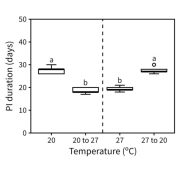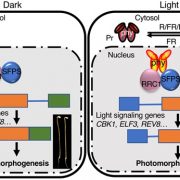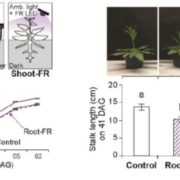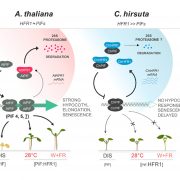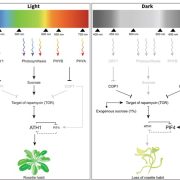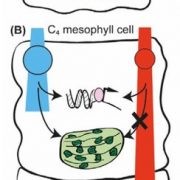Seasonal flowering and seasonal growth measure light duration differently
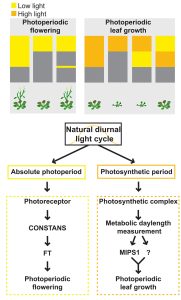 One of the first lessons a plant biologist learns is that many plants coordinate their seasonal flowering through measuring daylength, and that this process involves both photoreceptors and the biological clock that functions inside of cells. Of course, daylength also affects plant metabolism, in part by changing the amount of light received for photosynthesis, but also through integration with the clock. Here, Wang et al. carried out an elegant set of experiments to investigate the interactions between light, photoperiod, and seasonal growth. They identified MIPS-1 (MYOINOSITOL-1-PHOSPHATE SYNTHASE 1), a gene encoding an enzyme that produces myo-inositol, as photoperiod sensitive and required for growth in long but not short days; in other words, as a marker for seasonal growth. Analysis of mips1 mutants revealed that the growth response to photoperiod is genetically distinct from the flowering response to photoperiod. Interestingly, the daylength control of flowering responds to very low light levels, whereas the seasonal growth response is less sensitive to low light levels, and not so much daylength sensitive as “photosynthesis duration” sensitive. These results reveal that plants use multiple systems to measure different aspects of daylength and season and modulate their responses accordingly. It will be very interesting to investigate these new findings in crop plants. (Summary by Mary Williams @PlantTeaching) 10.1126/science.adg9196
One of the first lessons a plant biologist learns is that many plants coordinate their seasonal flowering through measuring daylength, and that this process involves both photoreceptors and the biological clock that functions inside of cells. Of course, daylength also affects plant metabolism, in part by changing the amount of light received for photosynthesis, but also through integration with the clock. Here, Wang et al. carried out an elegant set of experiments to investigate the interactions between light, photoperiod, and seasonal growth. They identified MIPS-1 (MYOINOSITOL-1-PHOSPHATE SYNTHASE 1), a gene encoding an enzyme that produces myo-inositol, as photoperiod sensitive and required for growth in long but not short days; in other words, as a marker for seasonal growth. Analysis of mips1 mutants revealed that the growth response to photoperiod is genetically distinct from the flowering response to photoperiod. Interestingly, the daylength control of flowering responds to very low light levels, whereas the seasonal growth response is less sensitive to low light levels, and not so much daylength sensitive as “photosynthesis duration” sensitive. These results reveal that plants use multiple systems to measure different aspects of daylength and season and modulate their responses accordingly. It will be very interesting to investigate these new findings in crop plants. (Summary by Mary Williams @PlantTeaching) 10.1126/science.adg9196


